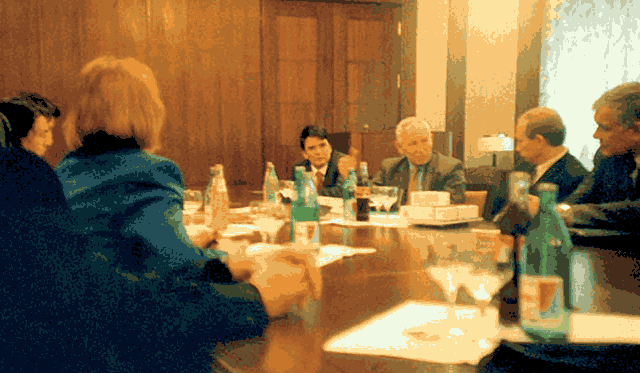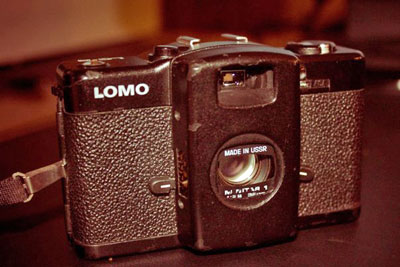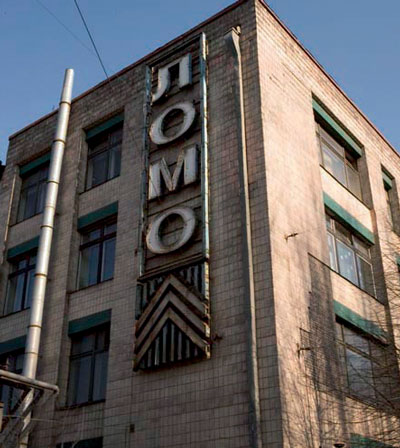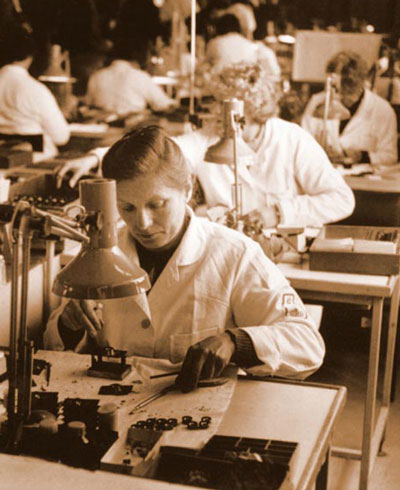Russian dictator Vladimir Putin has made a major impact through his career, much of which history will likely judge as appalling. His role in the weird little photographic niche which is Lomography is one chapter which is more benign than many of his impacts…

The story goes way back to the early ’80s in the Soviet era, when a General Igor Kornitzky, returning from a trip to the decadent West, made the director of the massive LOMO arms and optics factory in Leningrad (now St Petersberg) an offer he couldn’t refuse: start manufacturing cheap knock-offs of a Japanese compact camera, the Cosina CX-1, for the betterment and edification of the Soviet people. (LOMO is the acronym for Leningradskoye Optiko-Mekhanicheskoye Obyedinenie or ‘Leningrad Optical Mechanical Association’.)

The Japanese-made Cosina had a good sharp glass lens, a solid build and didn’t leak any light, immediately distinguishing it from the cosmetically similar LOMO LC-A, straight out of Leningrad. So the Russian masses finally had their very own point-and-shoot 35mm camera, just like the running dog lackeys of the bourgeoisie.
Not long after, according to the Lomography website ‘a group of Viennese students stumbled upon the LOMO LC-A in a quirky, old-school camera shop (in Russia), and started shooting from the hip. Upon returning to Vienna, they had their film rolls developed, resulting in strangely beautiful images.’ (One distinctive characteristic of the lens in the LOMO LC-A was that it upped the contrast levels of colour film.)
Soon every hipster in Austria was clamouring for a LOMO LC-A, with the demand only partially satisfied by ‘daring backpack raids’ to and from Russia by the founders of what would eventually become the Lomographic Society International (LSI).
 Lomography rapidly became a minor international phenomenon – a movement back to shooting photos ‘from the hip’, with less regard for rules of composition and exposure, and more for spontaneity and experimentation. A Lomography Manifesto was even produced.
Lomography rapidly became a minor international phenomenon – a movement back to shooting photos ‘from the hip’, with less regard for rules of composition and exposure, and more for spontaneity and experimentation. A Lomography Manifesto was even produced.
But with the USSR in free fall, by 1996 the LOMO factory decided to cease production of the LC-A, with increased prices reducing demand among the comrades. By this time Putin had moved on to join the Yeltsin administration in Moscow.
Another factor could have been Russia’s opening up to the west following the fall of the Soviet empire – Russian snapshooters now had other, better, imported camera options to choose from. There is an exquisite irony in hip Westerners clamouring for a badly-built, technically flawed, probably overpriced camera from behind what used to be the Iron Curtain, while the locals were abandoning it in droves in preference to superior Japanese products.
The LSI and a few Austrian parliamentarians travelled to St Petersberg to persuade the Russians to resume production. The key apparatchik (always wanted to use that word) on the Soviet side was none other than a Vladimir Vladimirovich Putin, whose role as first deputy chairman of the Government of Saint Petersburg included responsibility for international relations and foreign investments.
Demonstrating the powers of compulsion and determination which have made him such a scarey dude over the years, apparently it didn’t take much more than a phone call from Putin to the boss of the LOMO factory to see production of the LC-A resume, with something like 1000 cameras being shipped over to Vienna each month. Deputy Chairman Putin was made an honorary member of the Lomography Society.
 All was sweet until a year or so after, the Russians boosted the price of the cameras by 50 percent. The Lomography Society, and Lomography AG, which by this time was a growing business, found alternative manufacturers in China who were willing to make the camera at a lower price, changing the name to the LC-A+. The LOMO factory thus became surplus to Lomography’s requirements. However it is still one of the largest businesses in St Petersberg, manufacturing microscopes, spectral instruments, measuring instruments, sighting tubes, objective lenses, telescopes, sights, night vision devices, etc. But no more LC-As.
All was sweet until a year or so after, the Russians boosted the price of the cameras by 50 percent. The Lomography Society, and Lomography AG, which by this time was a growing business, found alternative manufacturers in China who were willing to make the camera at a lower price, changing the name to the LC-A+. The LOMO factory thus became surplus to Lomography’s requirements. However it is still one of the largest businesses in St Petersberg, manufacturing microscopes, spectral instruments, measuring instruments, sighting tubes, objective lenses, telescopes, sights, night vision devices, etc. But no more LC-As.
LSI began to expand its lo-fi range to include cameras like the Diana+, a facsimile of the plastic medium format Diana camera manufactured in Hong Kong in the 1970s. In 2008, Lomography launched the Lubitel+ ‘our pimped-up version of the twin-lensed classic (Russian) Lubitel camera’ (which itself was a rip-off of the medium format Voigtlander Brilliant).
Lomoography also expanded from selling not quite right cameras to not quite right film in 2008. It’s become an integral part of the European photographic community and a key driver for the conservation of analogue photography.
And as we know, Vladimir Putin has also shown he has expansionary plans, too. Wonder if the First Honorary Lomographer of Russia has a gold-plated LC-A in a bottom drawer somewhere….





Be First to Comment